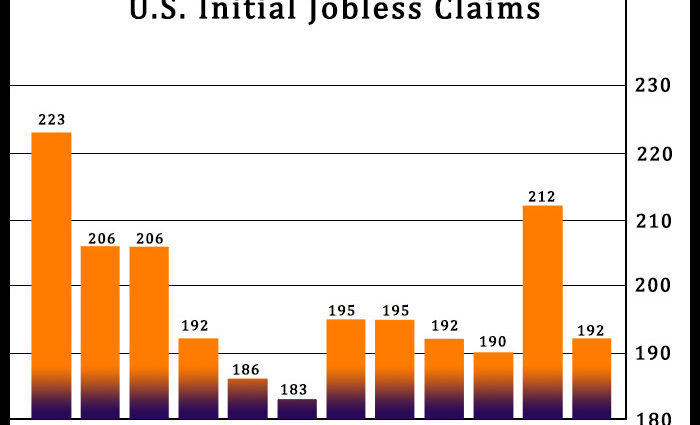First-time claims for U.S. unemployment benefits pulled back by more than expected in the week ended March 11th, according to a report released by the Labor Department on Thursday.
The report said initial jobless claims fell to 192,000, a decrease of 20,000 from the previous week’s revised level of 212,000.
Economists had expected jobless claims to slip to 205,000 from the 211,000 originally reported for the previous week.
“There are still few signs that the pick-up in announced layoffs in recent months, particularly in the tech sector, is feeding through to a rise in unemployment,” said Michael Pearce, Lead US Economist at Oxford Economics.
He added, “Many announced layoffs don’t end up happening, and those that have been laid off are quickly finding work elsewhere, reflecting the ongoing imbalance between labor demand and supply.”
The Labor Department said the less volatile four-week moving average also edged down to 196,500, a decrease of 750 from the previous week’s revised average of 197,250.
Continuing claims, a reading on the number of people receiving ongoing unemployment assistance, also fell by 29,000 to 1.684 million in the week ended March 4th.
The four-week moving average of continuing claims dipped to 1,676,500, a decrease of 1,750 from the previous week’s revised average of 1,678,250.
Last Friday, the Labor Department released a separate report showing employment in the U.S. jumped by much more than expected in the month of February.
The Labor Department said non-farm payroll employment shot up by 311,000 jobs in February after spiking by a revised 504,000 jobs in January.
Economists had expected employment to increase by 205,000 jobs compared to the surge of 517,000 jobs originally reported for the previous month.
Despite the stronger than expected job growth, the report said the unemployment rate rose to 3.6 percent in February from 3.4 percent in January. The unemployment rate was expected to be unchanged.
The unexpected increase came after the unemployment rate dropped to its lowest level since hitting a matching rate in May 1969.
Source: Read Full Article
-
Bally Sports Seals Carriage Deal With FuboTV, Ending Lengthy Absence From Major Streaming Bundles
-
Judy Tenuta Dies: “Love Goddess” Comic & Actress Was 72
-
Wall Street Might Open In Negative Territory
-
U.S. Stocks Turn In Lackluster Performance Following Mixed Jobs Data
-
WHO Calls On Countries To Raise Taxes On Alcohol, Sugary Beverages

